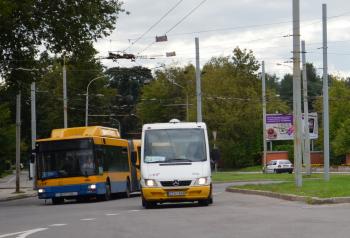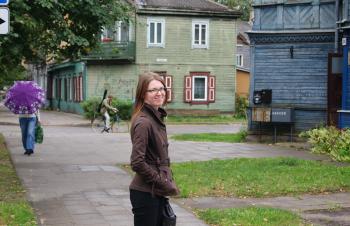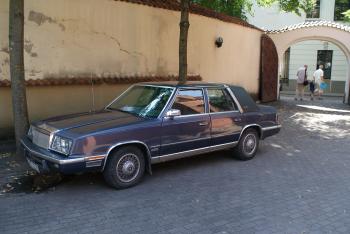Getting Around Vilnius
Getting Around Vilnius
All City Transport Options: What Locals Use and What’s Best for Tourists
General Overview
Getting around Vilnius can be an adventure! One thing that might surprise you is how you’re more likely to see locals calmly waiting for their ride rather than rushing in a frenzy. The public transport system here, while it takes a bit of getting used to, is actually pretty efficient once you understand it.So, let’s break it down: there are buses, trolleybuses, and the tram (which is somewhat rare in other cities but is a bit of a gem here). These usually run from about 5 AM to midnight, so plan accordingly for those late-night outings. A regular ticket, priced around €1 for a single ride, is quite affordable compared to places like Western Europe. For those planning to explore a bit more, a tourist pass for a day is generally priced around €5. Oh, before I forget, peak times can bump that ticket price up a bit, but at least the buses are more frequent during rush hours, which, let me tell you, can get packed—especially on routes like 2 and 88.
One common tourist pitfall I've noticed? Many visitors assume they can pay cash on board. Spoiler: you usually have to buy your tickets beforehand at kiosks or via the official app. I learned that the hard way on my first bus ride!
On a brighter note, I once hopped on the wrong trolleybus but ended up having a delightful chat with a local who showed me some hidden spots near Ostra Brama (the Gates of Dawn)—it completely changed my day! A helpful local hack is to download the local transport app; it'll save you from zeroing in on the routes you need and help avoid wasting time.
As for my personal experience, one rush hour I stuck to route 1 to head towards Vingis Park, and it was a creature of pure chaos! But what I loved was the determination of locals—they even seemed unfazed by the crowding. And let’s not forget about the weather! In winter, public transport can sometimes run slower due to snow, so it’s wise to check the schedules before heading out.
In summary: get accustomed to the ticketing system, use the app, and avoid peak hours if you can. And definitely wander a bit—every misstep can lead to a surprising discovery. Happy travels in Vilnius!
Types of Transport

popular with tourists
The bus system in Vilnius is extensive and covers key areas including the city center, major tourist attractions like the Old Town, and areas like Užupis. Tickets cost approximately €1.50 when purchased from a kiosk or €2.00 if bought directly on the bus, but it's best to use the mobile app "Vilniaus viešasis transportas" for easy purchasing and real-time schedules. A helpful tip for tourists is to familiarize yourself with popular bus routes such as 1 (which takes you to the Train Station) and 88 (which goes to the Vilnius University area), as they can get you close to many attractions. Additionally, be sure to validate your ticket by stamping it in the machine located on the bus, as failing to do so may result in a fine. Lastly, keep an eye on your belongings, especially during crowded times to ensure a safe and pleasant journey.

Walking in Vilnius is a delightful way to explore the city’s charming streets and rich history, with pedestrian-friendly routes covering key areas like the UNESCO-listed Old Town, Užupis, and the vibrant city center. You don’t need to worry about costs for walking, but be mindful of your belongings as you navigate busy squares and markets. A great tip for tourists is to download a walking map or use a navigation app, as some winding streets may be confusing without a guide; consider starting at Cathedral Square and wandering towards Gediminas Castle for breathtaking views. Additionally, wear comfortable shoes and be prepared for cobblestone paths, and always keep an eye out for cyclists, as bike lanes often run parallel to pedestrian walkways. Remember to take breaks at local cafes along the way, where you can savor traditional Lithuanian pastries while soaking in the lively atmosphere!

Taxis in Vilnius are readily available and can be flagged down on the street or booked via mobile apps like Bolt or Uber, which are widely used and reliable. Typical fares start at around €1.50, with an additional charge of approximately €0.50 per kilometer, making it a cost-effective option for getting around the city. For tourists, it's advisable to use only licensed taxis, identifiable by a taxi sign on the roof and a taxi meter, to ensure safety and fair pricing. To save time, consider booking a taxi in advance during busy periods or events, as they can be in high demand. Lastly, always check that the meter is running from the start of your journey to avoid any surprises in the final cost.

The auto transport in Vilnius is widely accessible and particularly useful for reaching areas outside the city center, as well as attractions like Trakai Castle or the nearby hills of Užupis. For practical usage, car rentals typically cost between €25 and €50 per day, with major companies available at the airport and in the city; be sure to book in advance, especially during peak tourist seasons. A key tip for tourists is to familiarize yourself with local parking regulations, as illegal parking can incur fines ranging from €30 to €70, and use of mobile payment apps like "Parklon" can simplify the process. To save time, try to travel early in the morning or later in the evening to avoid rush hour traffic, especially on main roads like Gedimino Avenue. Always remember to keep your vehicle locked and valuables out of sight to ensure safety while exploring Vilnius.
Here you can learn about all types of transport in Vilnius. What transport is available, how to reach tourist attractions and which mode of transport is optimal.
